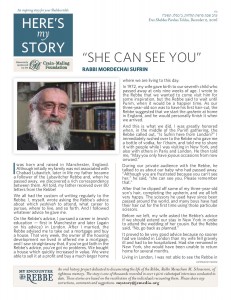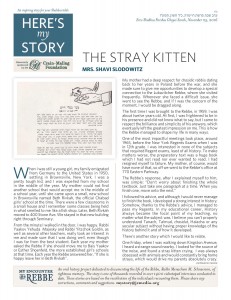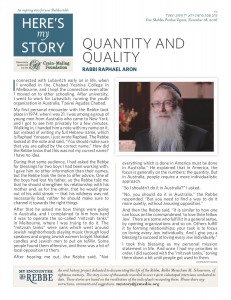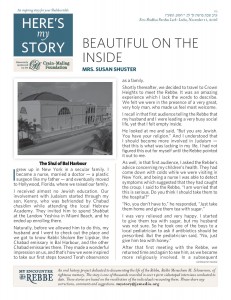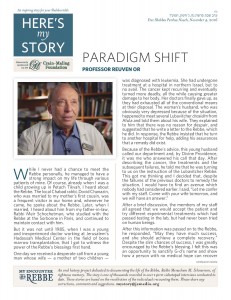“She Can See You”
I was born and raised in Manchester, England. Although initially my family was not associated with Chabad Lubavitch, later in life my father became a follower of the Lubavitcher Rebbe and, when he passed away, we discovered a rich correspondence between them. All told, my father received over 80 letters from the Rebbe!
We all had the custom of writing regularly to the Rebbe. I, myself, wrote asking the Rebbe’s advice about which yeshivah to attend, what career to pursue, where to live, and so forth. And I followed whatever advice he gave me.
On the Rebbe’s advice, I pursued a career in Jewish education – first in Manchester and later (again on his advice) in London. After I married, the Rebbe advised me to take out a mortgage and buy a house. That very week, the owner of the housing development we lived in offered me a mortgage, and I saw straightaway that, if you’ve got faith in the Rebbe’s advice, you’ve got no problems. We bought a house which quickly increased in value. We were able to sell it at a profit and buy a much larger home where we are living to this day.
In 1972, my wife gave birth to our seventh child who passed away at only nine weeks of age. I wrote to the Rebbe that we wanted to come visit him for some inspiration, but the Rebbe said to wait a little while. As our three-year-old son was to have his first hair-cut, the Rebbe suggested that we start the upsherin at home in England, and he would personally finish it when we arrived.
And this is what we did. I was greatly honored when, in the middle of the Purim gathering, the Rebbe called out, “Is Sufrin here from London?” I immediately rushed over to the Rebbe who gave me a bottle of vodka, for l’chaim, and told me to share it with people while I was visiting in New York, and also with others in Paris and London. He then told me, “May you only have joyous occasions from now onward.”
I was happy to share the vodka in New York and London, but how was I to do this in Paris, I wondered. And then the Rebbe told me that Chabad’s Paris emissary was also visiting in New York and that I should share with him so he could distribute in Paris.
During the private audience with the Rebbe, he talked to us about our baby who had passed away. “Although you are frustrated because you can’t see her,” he said, “she can see you. Please remember that.” The Rebbe also said that it would be advisable for us to have more children.
After that he clipped off some of my three-year-old son’s hair, completing the upsherin, and we all left very happy. The scissors he used have since been passed around the world, and many boys have had their hair cut for the first time using those particular scissors. (more…)


